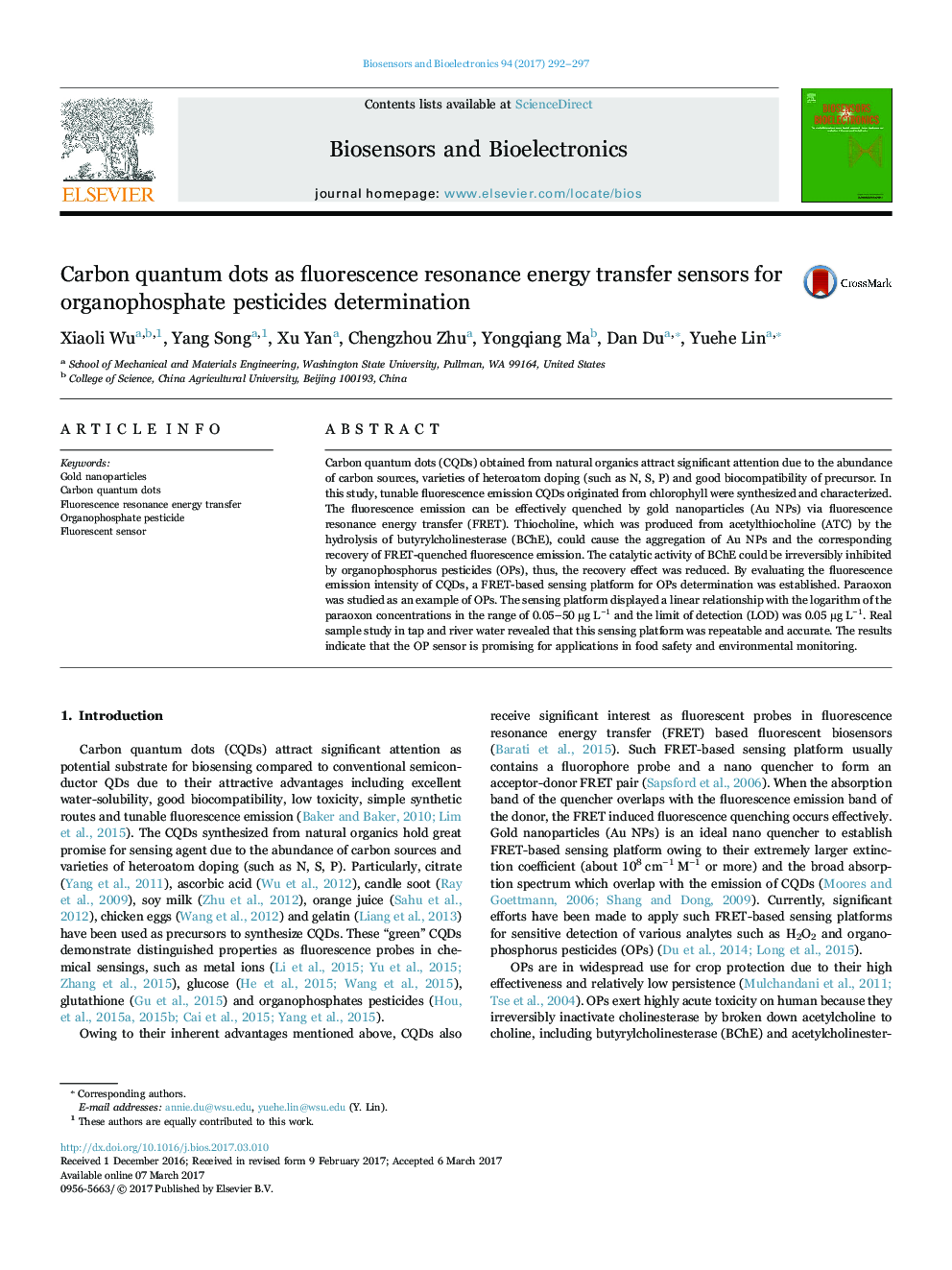| Article ID | Journal | Published Year | Pages | File Type |
|---|---|---|---|---|
| 5031056 | Biosensors and Bioelectronics | 2017 | 6 Pages |
Abstract
Carbon quantum dots (CQDs) obtained from natural organics attract significant attention due to the abundance of carbon sources, varieties of heteroatom doping (such as N, S, P) and good biocompatibility of precursor. In this study, tunable fluorescence emission CQDs originated from chlorophyll were synthesized and characterized. The fluorescence emission can be effectively quenched by gold nanoparticles (Au NPs) via fluorescence resonance energy transfer (FRET). Thiocholine, which was produced from acetylthiocholine (ATC) by the hydrolysis of butyrylcholinesterase (BChE), could cause the aggregation of Au NPs and the corresponding recovery of FRET-quenched fluorescence emission. The catalytic activity of BChE could be irreversibly inhibited by organophosphorus pesticides (OPs), thus, the recovery effect was reduced. By evaluating the fluorescence emission intensity of CQDs, a FRET-based sensing platform for OPs determination was established. Paraoxon was studied as an example of OPs. The sensing platform displayed a linear relationship with the logarithm of the paraoxon concentrations in the range of 0.05-50 μg Lâ1 and the limit of detection (LOD) was 0.05 μg Lâ1. Real sample study in tap and river water revealed that this sensing platform was repeatable and accurate. The results indicate that the OP sensor is promising for applications in food safety and environmental monitoring.
Keywords
Related Topics
Physical Sciences and Engineering
Chemistry
Analytical Chemistry
Authors
Xiaoli Wu, Yang Song, Xu Yan, Chengzhou Zhu, Yongqiang Ma, Dan Du, Yuehe Lin,
